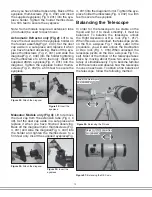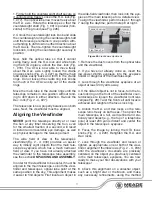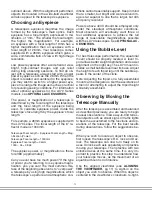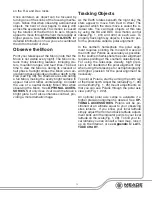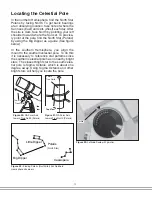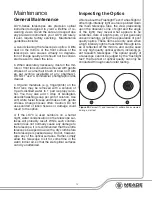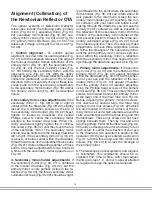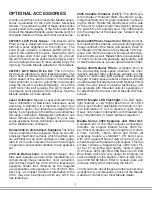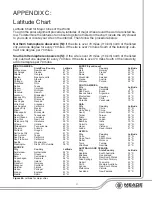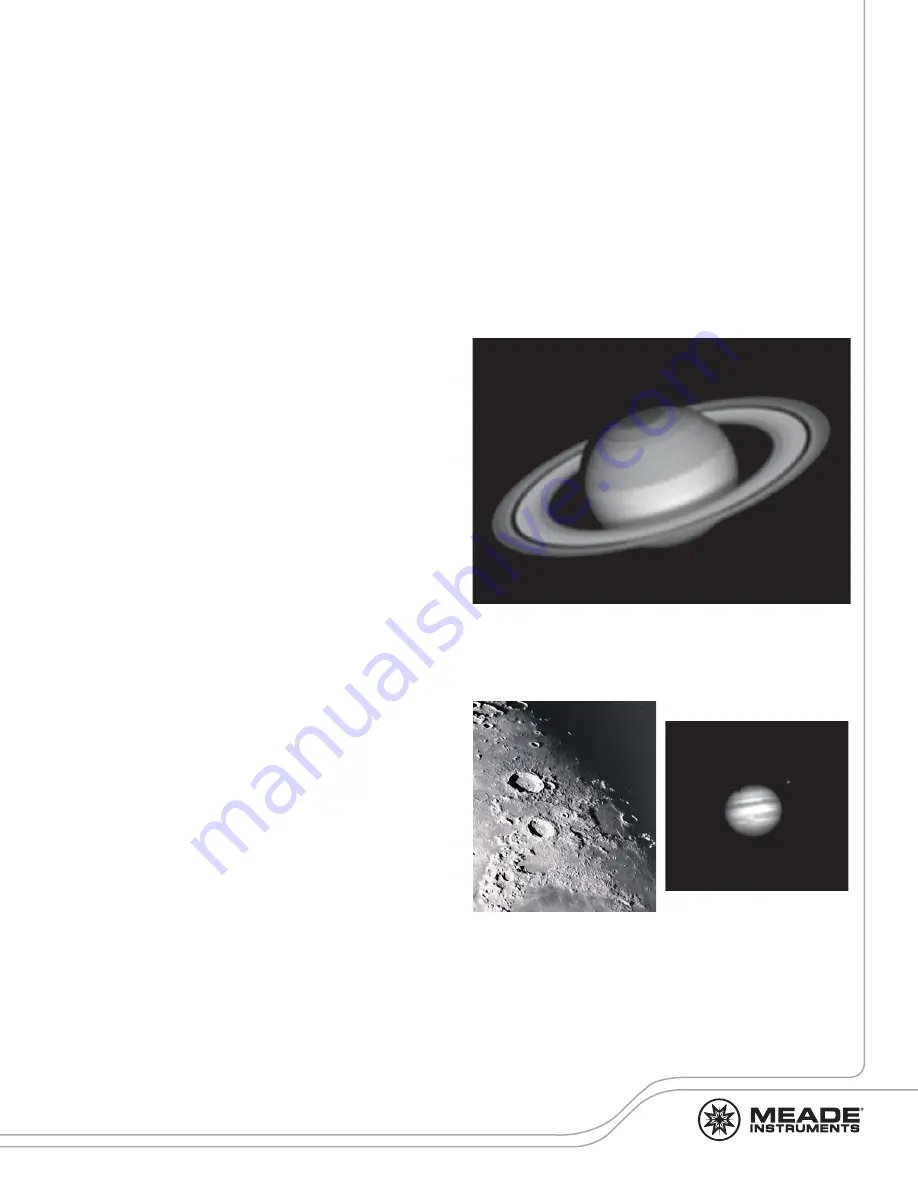
23
coloring on the planet’s surface may be visible.
Jupiter is the largest planet in our solar system
and is eleven times the diameter of Earth. The
planet appears as a disk with dark lines stretch-
ing across the surface. These lines are cloud
bands in the atmosphere. Four of Jupiter’s
moons (Io, Europa, Ganymede, and Calisto) can
be seen as “star-like” points of light when using
even the lowest magnification. These moons
orbit Jupiter so that the number of moons vis-
ible on any given night changes as they circle
around the giant planet.
Saturn is nine times the diameter of Earth and
appears as a small, round disk with rings ex-
tending out from either side. In 1610, Galileo,
the first person to observe Saturn through a
telescope, did not understand that what he was
seeing were rings. Instead, he believed that
Saturn had “ears.” Saturn’s rings are composed
of billions of ice particles ranging in size from a
speck of dust to the size of a house. The ma-
jor division in Saturn’s rings, called the Cassini
Division, is occasionally visible through medium
sized telescopes. Titan, the largest of Saturn’s
moons can also be seen as a bright, star-like
object near the planet.
Deep-Sky Objects: Star charts can be used to
locate constellations, individual stars and deep-
sky objects. Examples of various deep-sky ob-
jects are given below:
Stars are large gaseous objects that are self-illu-
minated by nuclear fusion in their core. Because
of their vast distances from our solar system, all
stars appear as pinpoints of light, irrespective of
the size of the telescope used.
Nebulae are vast interstellar clouds of gas and
dust where stars are formed. Most impressive
of these is the Great Nebula in Orion (M42), a
diffuse nebula that appears as a faint wispy gray
cloud. M42 is 1600 light years from Earth.
Open Clusters are loose groupings of young
stars, all recently formed from the same diffuse
nebula. The Pleiades is an open cluster 410
light years away. Through the LX70 telescope
numerous stars are visible.
Constellations are large, imaginary patterns of
stars believed by ancient civilizations to be the
celestial equivalent of objects, animals, people,
or gods. These patterns are too large to be seen
through a telescope. To learn the constellations,
start with an easy grouping of stars, such as the
Big Dipper in Ursa Major. Then, use a star chart
to explore across the sky.
Galaxies are large assemblies of stars, nebu-
lae, and star clusters that are bound by gravity.
The most common shape is spiral (such as our
own Milky Way), but galaxies can also be ellip-
tical, or even irregular blobs. The Andromeda
Galaxy (M31) is the closest spiral-type galaxy to
our own. This galaxy appears fuzzy and cigar-
shaped. It is 2.2 million light years away in the
constellation Andromeda, located between the
large “W” of Cassiopeia and the great square of
Pegasus.
Figure 45:
Saturn
Figure 46:
Craters on the
Moon
Figure 47:
Jupiter
Summary of Contents for LX70 Series
Page 1: ...1 Instruction Manual LX70 Series German Equatorial Telescopes...
Page 25: ...25 OBSERVATION LOG...
Page 26: ...26 26 OBSERVATION LOG...
Page 27: ...27 OBSERVATION LOG...


